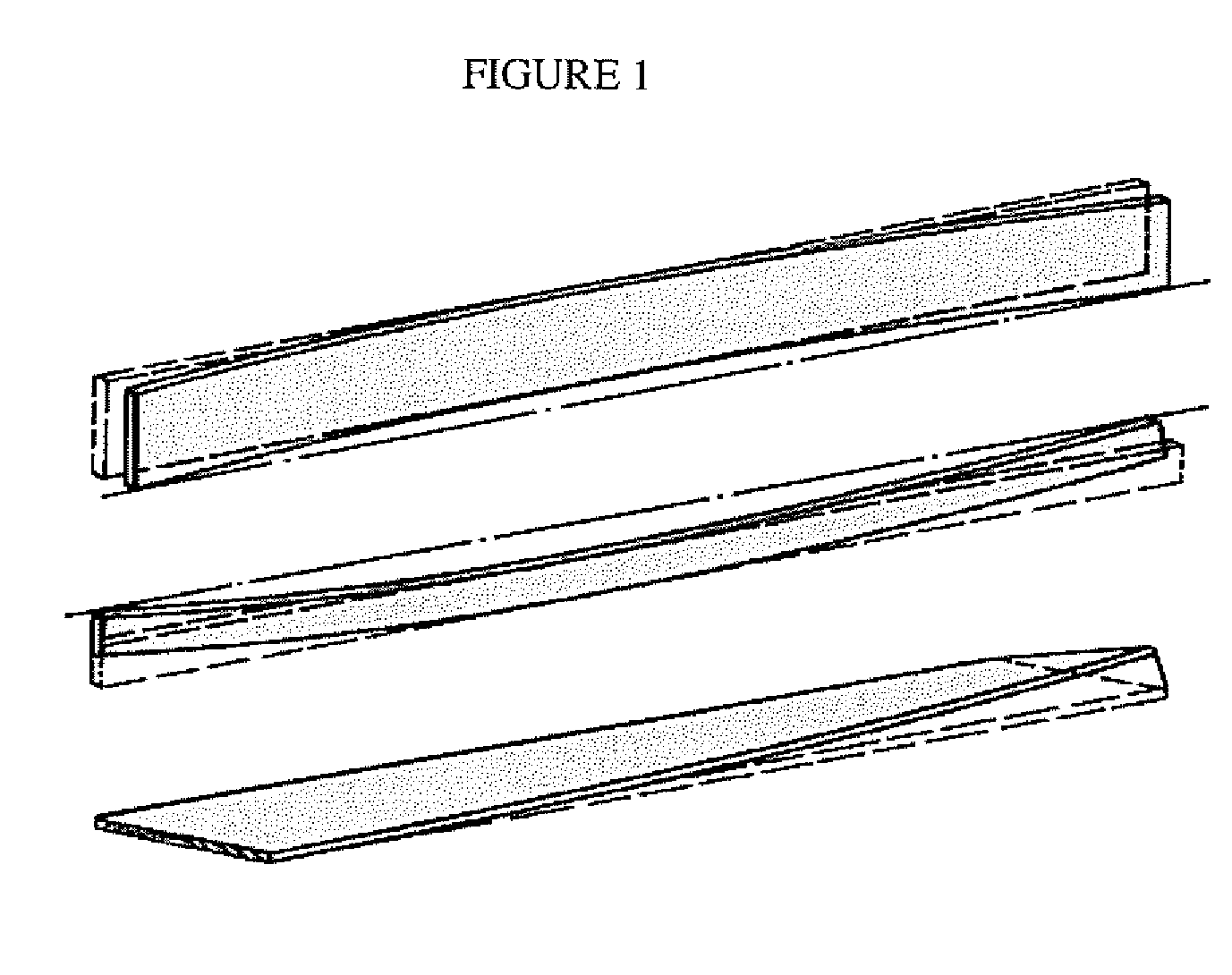Methods for predicting dimensional stability of a wood product based on differential characteristics
a technology of dimensional stability and wood products, applied in the field of methods for predicting dimensional stability of wood products based on differential characteristics, can solve the problems of softwood lumber continuing to lose market share, prone to additional “in-service” warps, and changes in both dimension and warp properties
- Summary
- Abstract
- Description
- Claims
- Application Information
AI Technical Summary
Benefits of technology
Problems solved by technology
Method used
Image
Examples
example 1
[0025]This example is taken from a laboratory study of lumber from Idabel, Okla. A sample of 3 units of 2 inch by 4 inch by 8 inch lumber (about 600 boards) was collected from a planer mill in Idabel and sent to Weyerhaeuser Technology Center (“WTC”) [Federal Way, Wash.]. This lumber was measured for as-received warp, moisture content and acoustic-velocity at WTC, and then sent to Lucidyne, Inc. for scanning with their GradeScan system, a system for automated visual grading of lumber based on, for example, knots, wane, warp, or the like. The lumber was subsequently allowed to equilibrate in a kiln at 20% relative humidity (“RH”), and then re-measured for warp and moisture content.
[0026]The warp measurements made at WTC were taken every inch down the length of the board and the ends of the boards were set to zero displacement. This creates a warp profile. The GradeScan unit measures Red, Green and Blue colors at high-resolution over the board, along with “T1” tracheid information (re...
PUM
 Login to View More
Login to View More Abstract
Description
Claims
Application Information
 Login to View More
Login to View More - R&D
- Intellectual Property
- Life Sciences
- Materials
- Tech Scout
- Unparalleled Data Quality
- Higher Quality Content
- 60% Fewer Hallucinations
Browse by: Latest US Patents, China's latest patents, Technical Efficacy Thesaurus, Application Domain, Technology Topic, Popular Technical Reports.
© 2025 PatSnap. All rights reserved.Legal|Privacy policy|Modern Slavery Act Transparency Statement|Sitemap|About US| Contact US: help@patsnap.com



